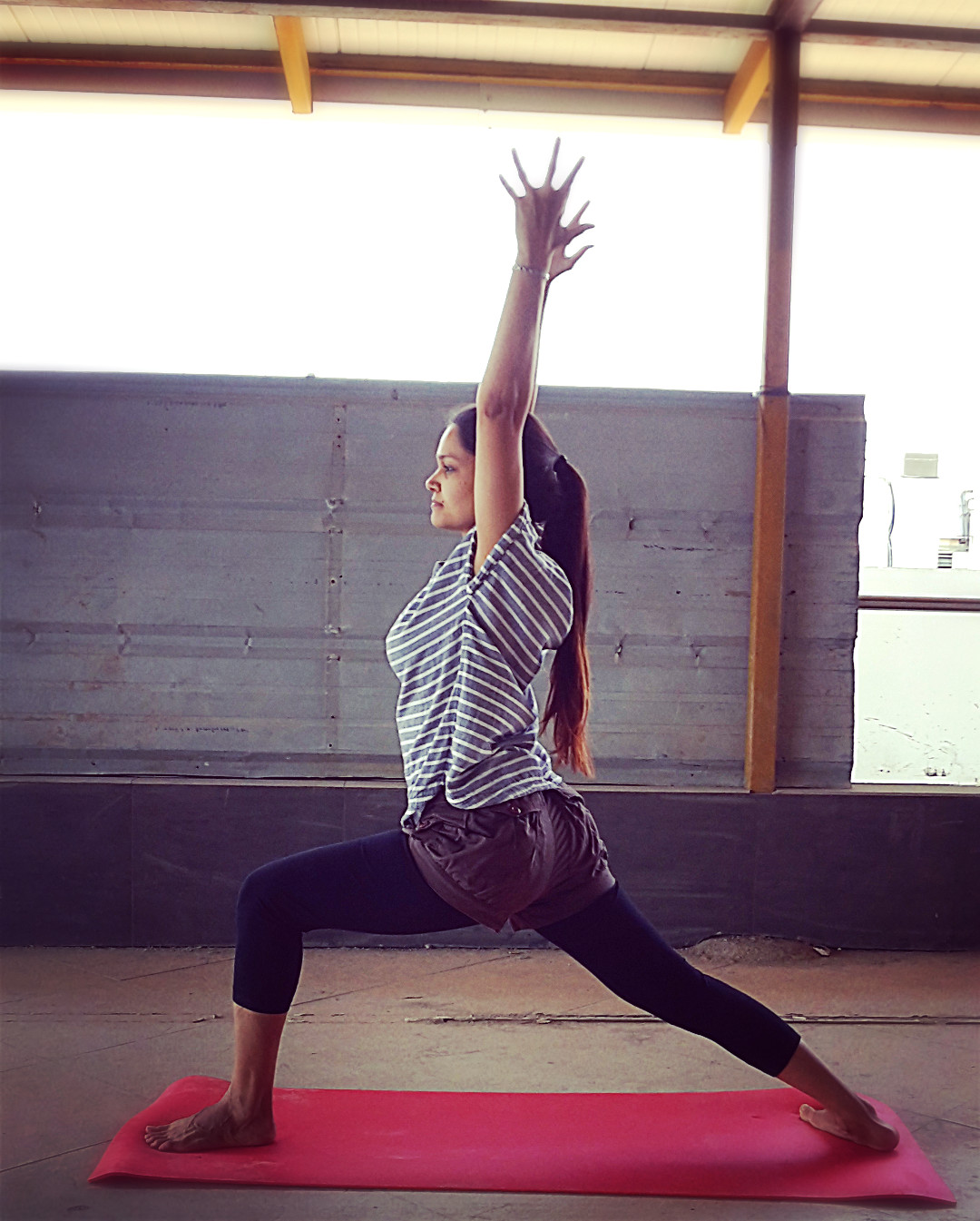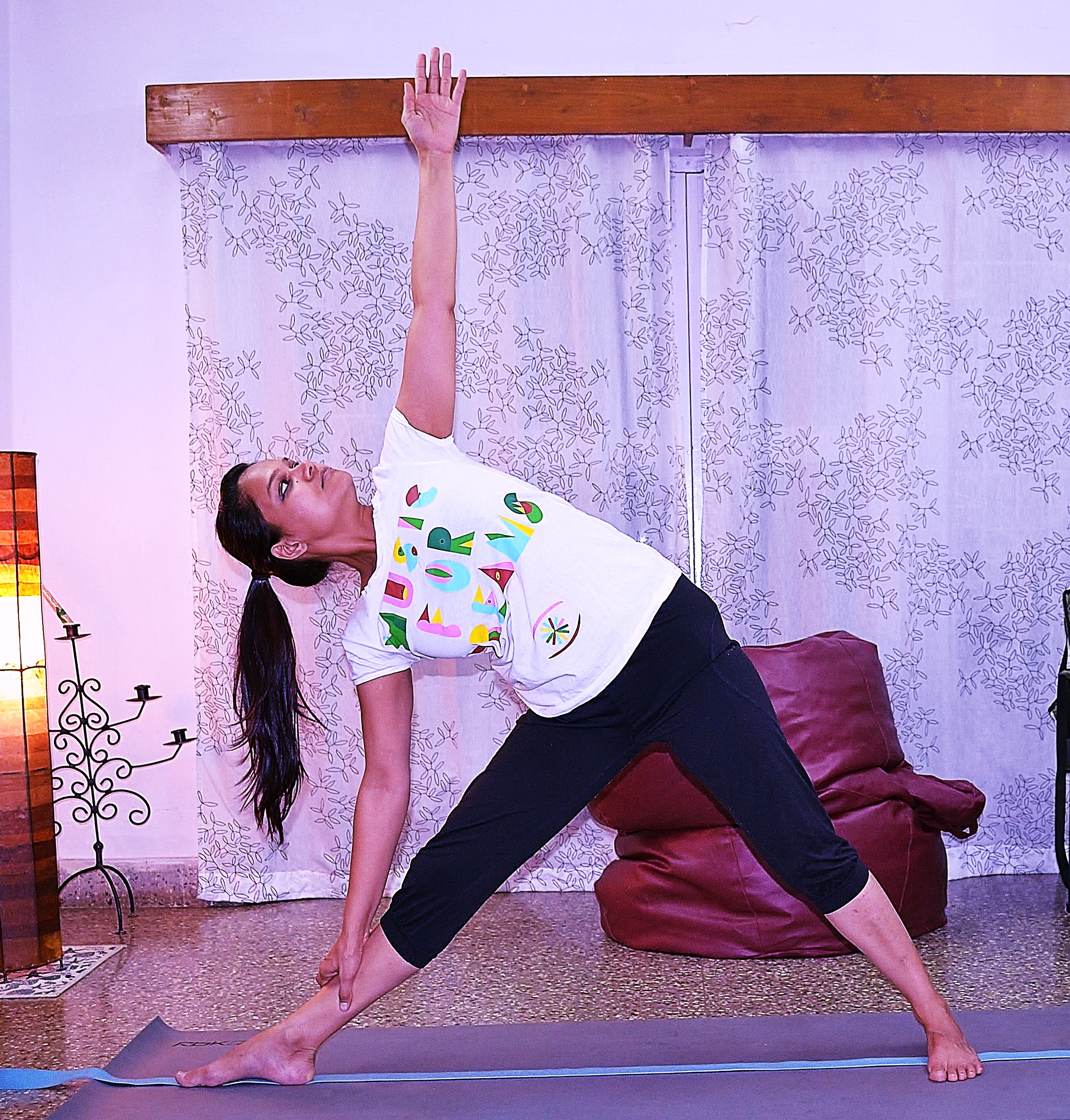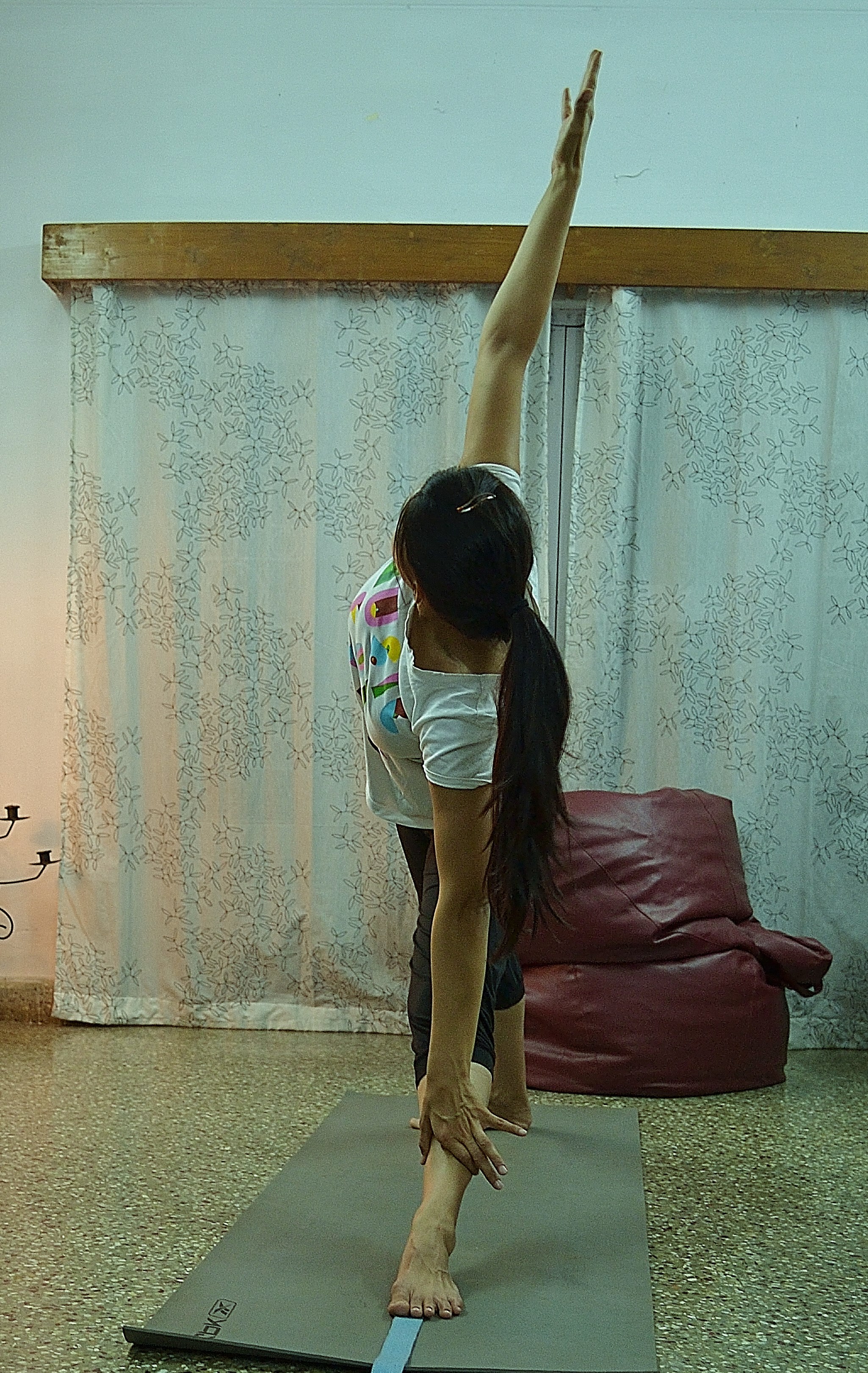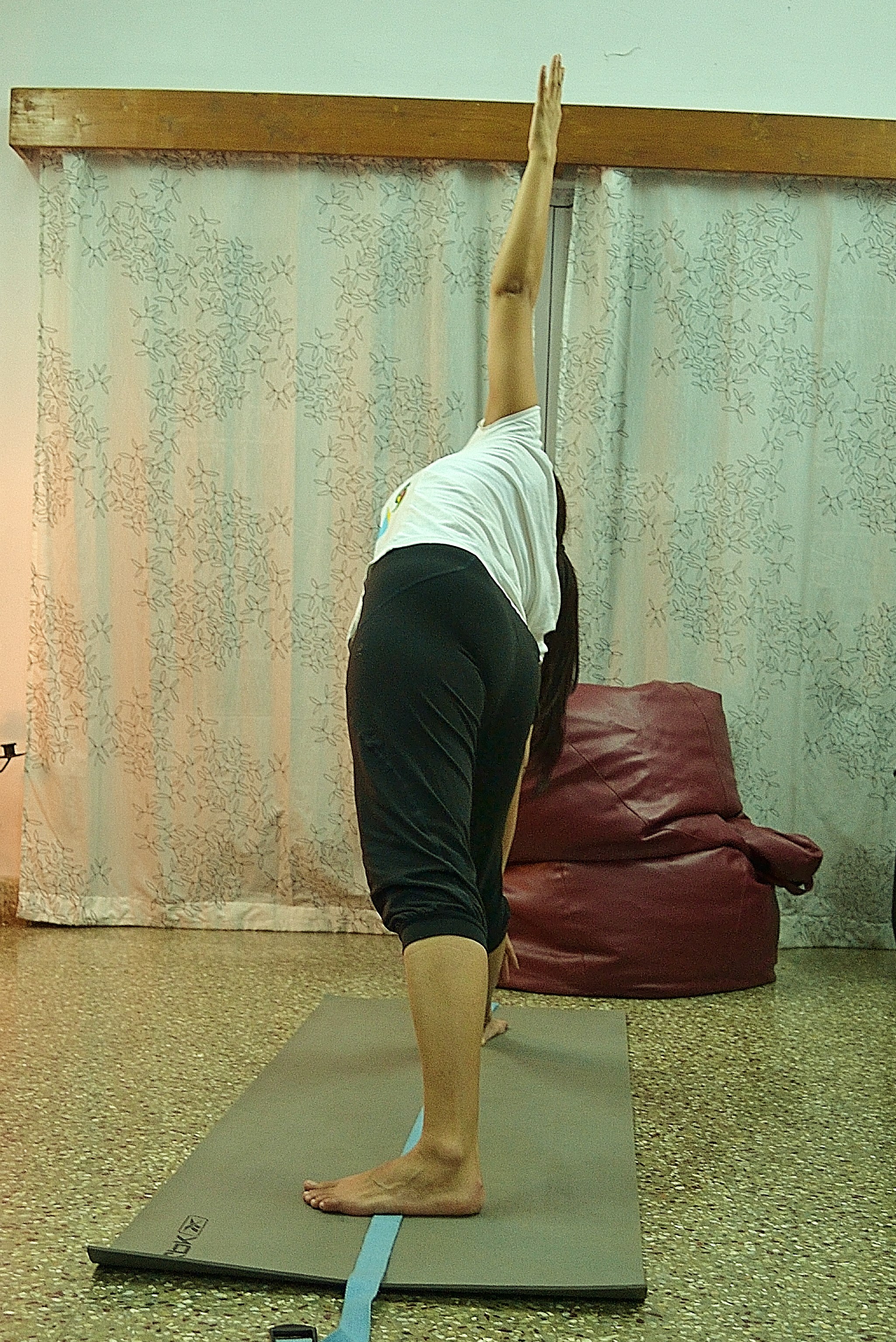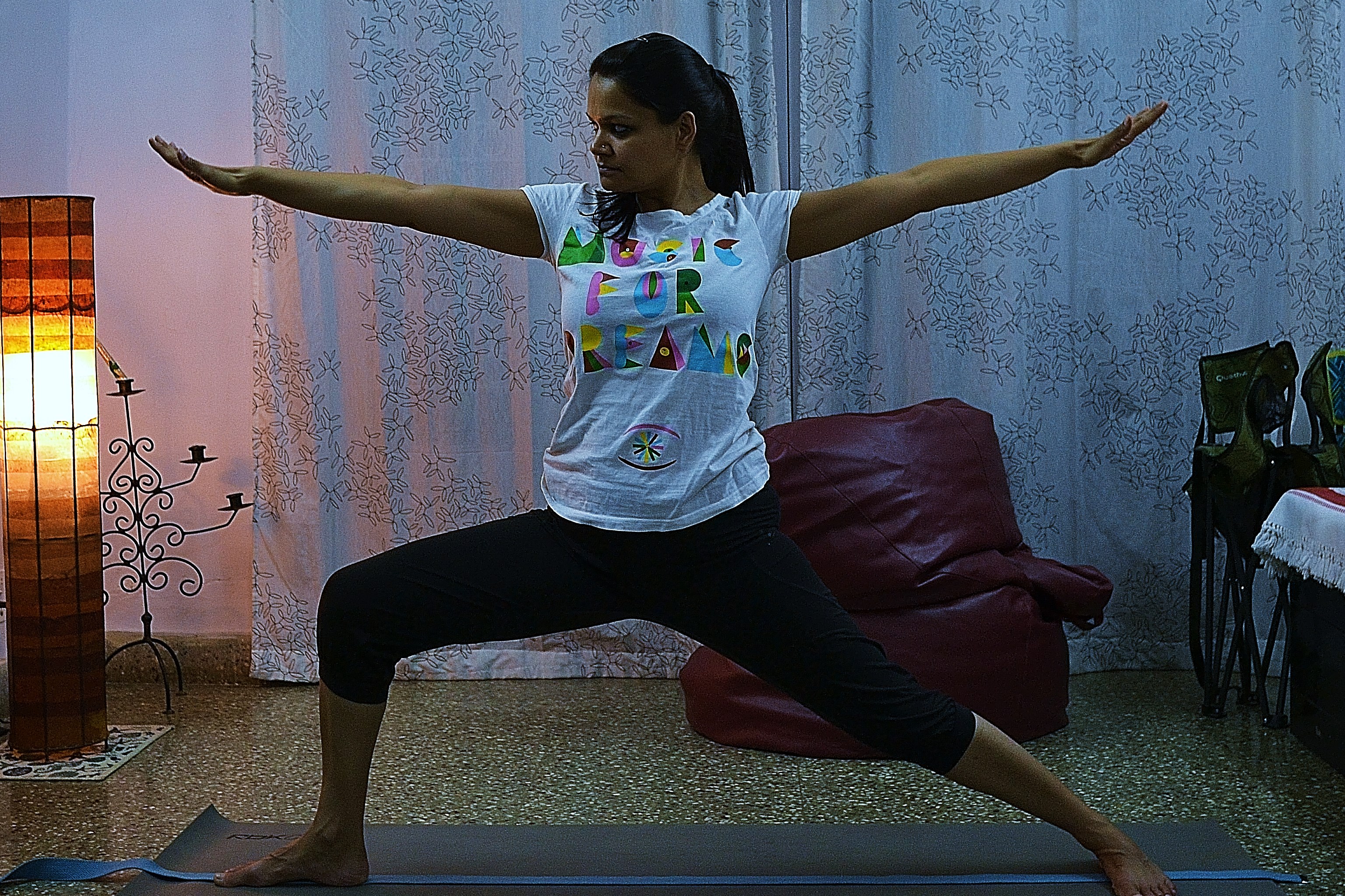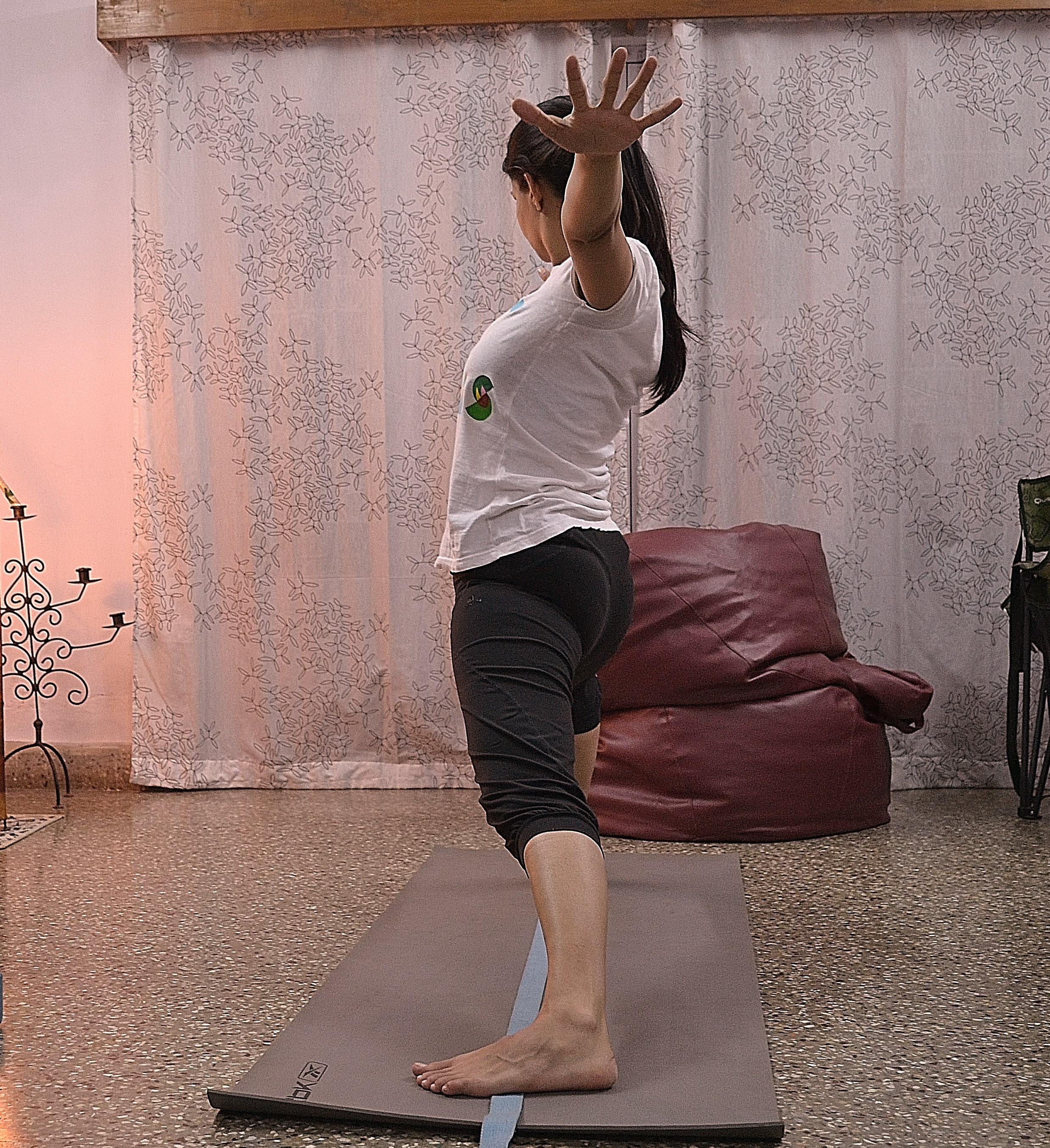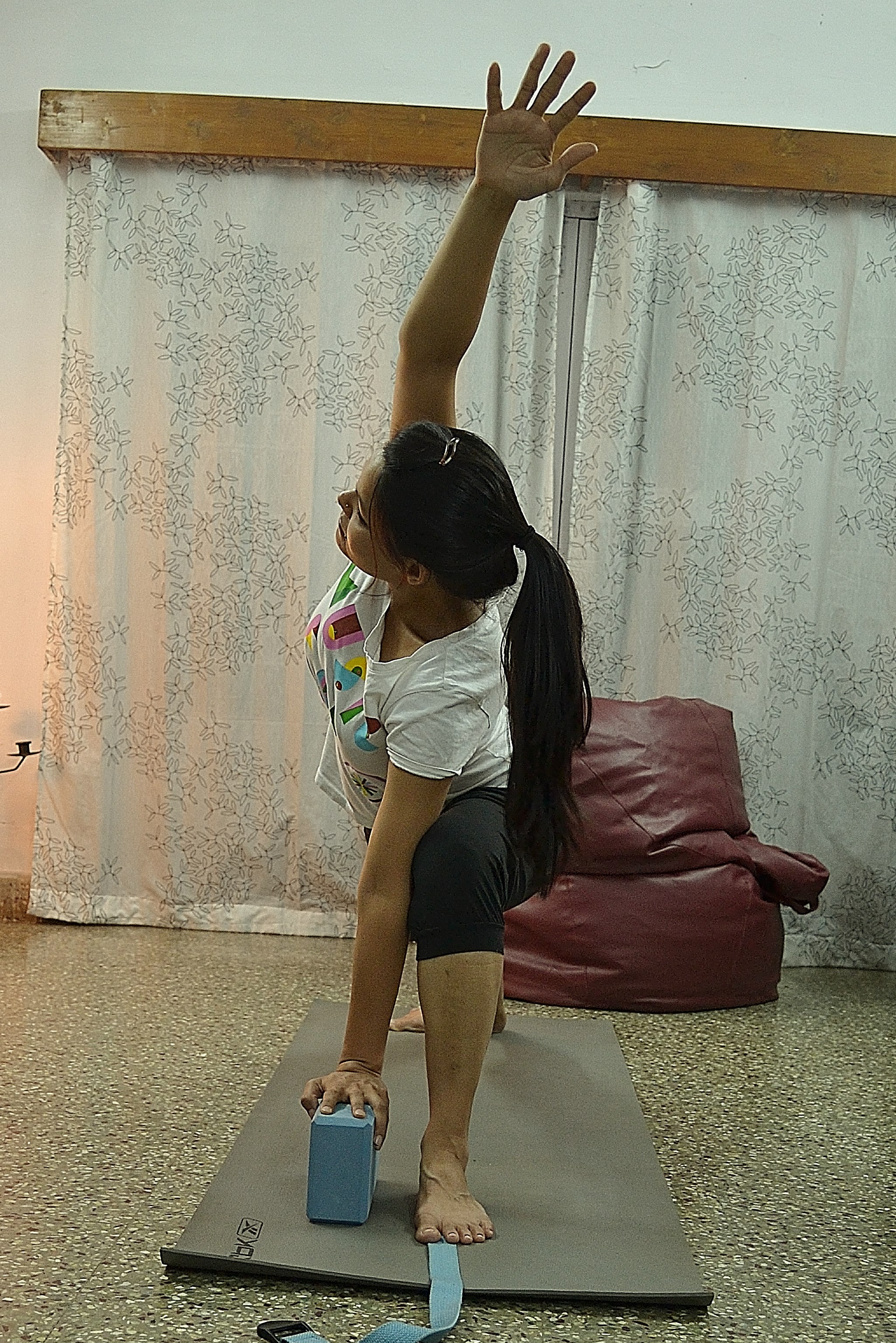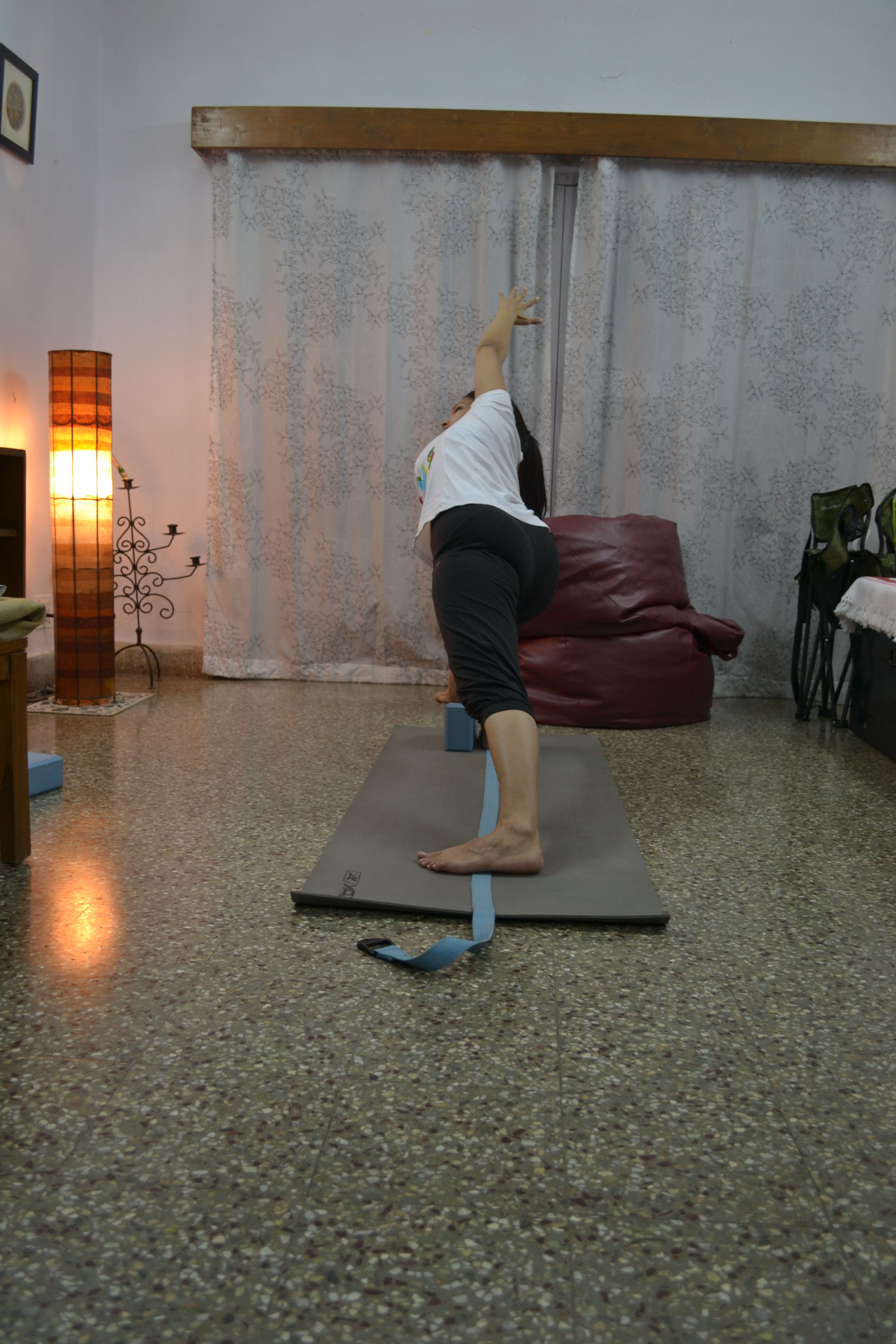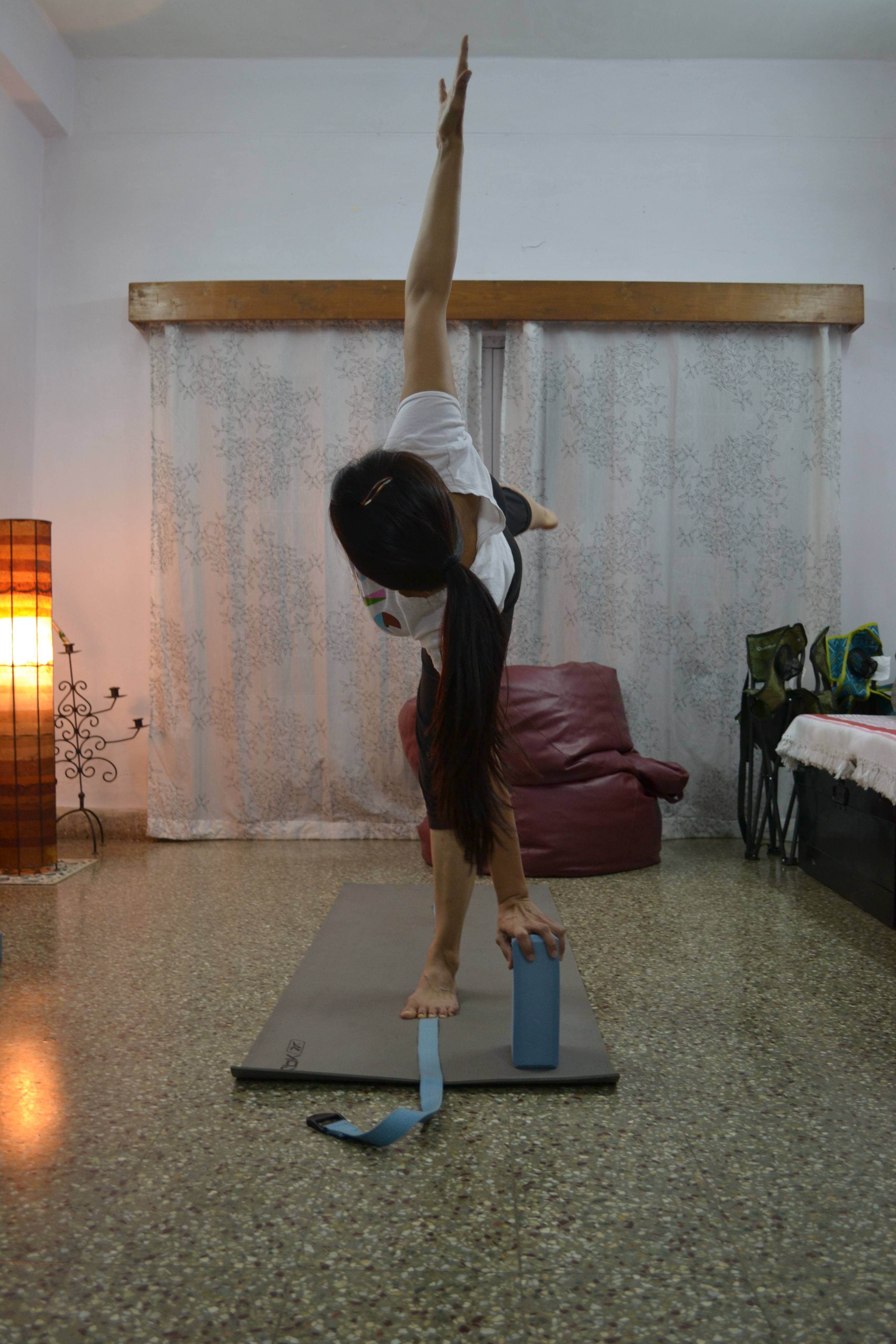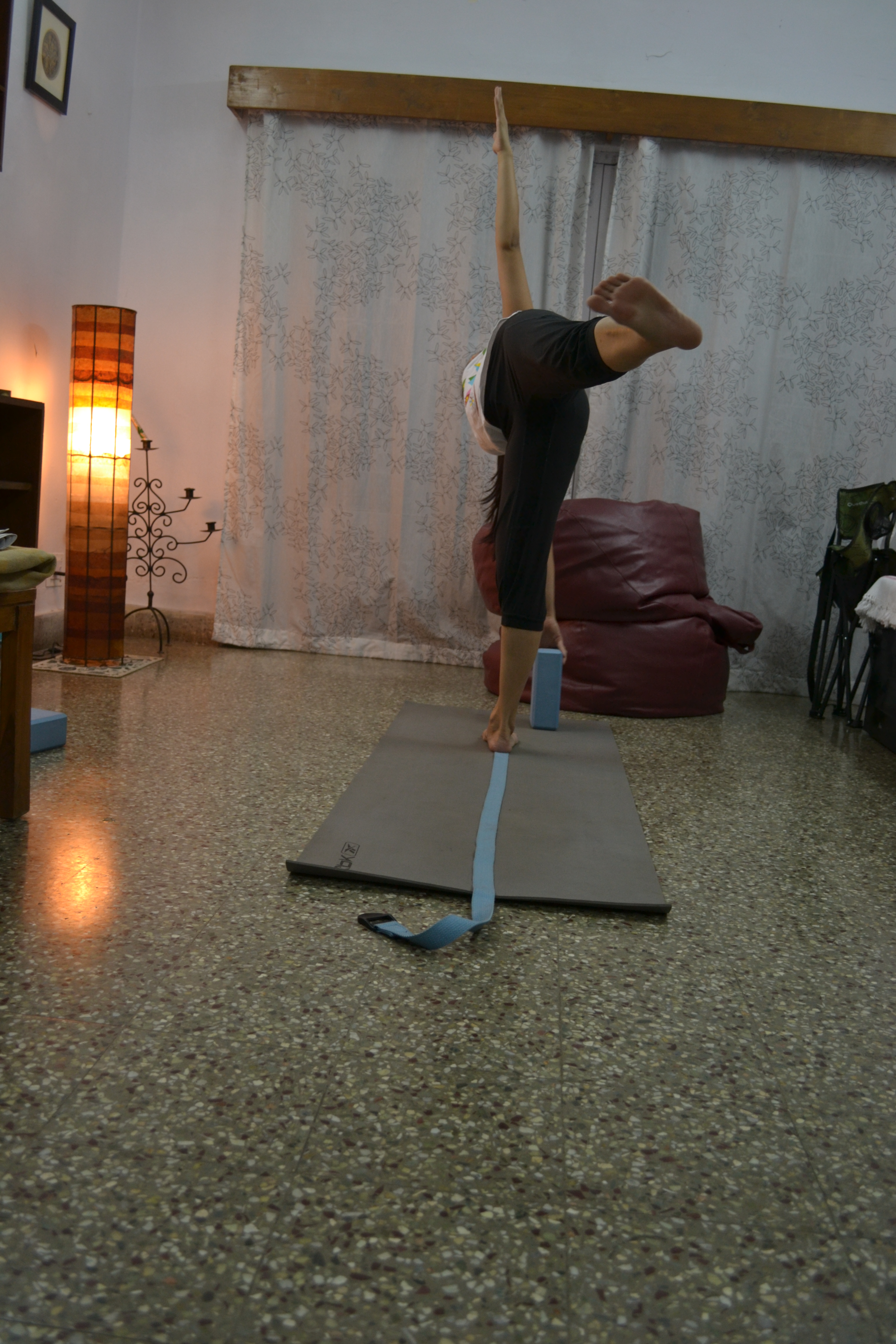
Let’s start this series with a standing asana. When planning a yoga routine, it’s always good to throw in a couple of standing asanas because they increase strength and vitality. They also make you feel more energetic and warm the body up for the remaining session. Most standing asanas work on strengthening the legs. Along with this (because yogasanas work on multiple aspects at the same time), standing asanas work on balance and in Virbhdrasana 1 you are also working on opening up the hips. Which is why this pose is great for women. Any hip opener will work on toning and stretching the muscles of the lower back, which is imperative for pregnant women as well as for people who sit a lot.
The benefits of Virbhardasana 1 (Warrior 1):
- strengthens the legs
- strengthens the arms (yes! because you’re not only raising your arms up you are reaching up and spreading your fingers wide and ensuring that all the muscles of the arms are activated.)
- opens the hips and ensures that blood circulation around the hip joint and abdominal organs is increased.
- blood circulation to the reproductive organs is also increased, which is what helps in alleviating symptoms of PCOS/PCOD.
- opens up the chest (in the final pose lift the sternum up). This helps in opening up the lungs, which helps in better quality of breath.
- better breathing helps in more oxygen being assimilated into the system and this energizes the entire body.
- improves balance (it looks easy but balancing in this asana can be a challenge for some)
- with an improvement in balance comes an improvement in concentration levels.
This pose can be practiced by everyone, except those who are suffering from hip, knees, back or shoulder injuries. If you feel that you are not practicing this pose correctly, ask your teacher for help, or leave me a comment.
Also – pregnant and menstruating women can practice Virbhadrasana 1 too.
